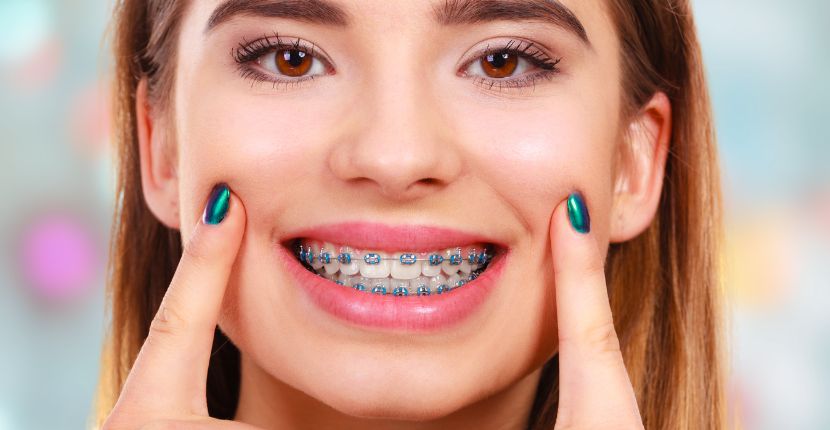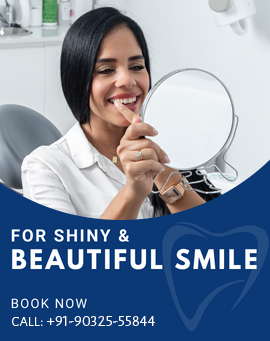10:00 AM to 8:30 PM (Mon - Sat)
10:00 AM to 2:00 PM (Sunday)
Braces: The Good and the Bad Explained

Braces: The Good and the Bad Explained
Braces are an important component of orthodontics that help align teeth and jaws. They help achieve straighter teeth that function better and enhance your look. While braces have many advantages, they also come with many disadvantages. This blog enlists various advantages and disadvantages of braces that must be considered before getting them for yourself.
The Good: Benefits of Braces
1. Improved Oral Health
Braces provide straighter teeth that are easier to clean, enhancing oral health practices such as brushing and flossing. This improved oral health maintenance reduces the risk of cavities, gum diseases, and tooth decay for optimal dental health.
2. Enhanced Aesthetics
Straighter teeth enhance your appearance with an improved smile and boost self-confidence and self-esteem so you can be comfortable smiling more often.
3. Better Functionality
Misaligned teeth often have bite issues such as overbite, underbite, and crossbite, which can cause difficulty chewing and speaking. Aligning the teeth perfectly can help alleviate these issues and restore functionality.
4. Prevention of Future Dental Problems
Teeth with improper alignment can cause jaw problems and stress on the teeth, which can lead to tooth extractions and other complex dental procedures later in life. Thus, braces can help avoid these issues by straightening the teeth.
5. Long-term Benefits
Braces provide long-lasting solutions to misaligned or crooked teeth. With proper retention and care, they can last a lifetime. Hence, you can enjoy improved oral health and functionality for a long time.
The Bad: Drawbacks of Braces
1. Discomfort and Pain
Braces can initially cause discomfort when placed or after adjustments. However, once you get used to them, the discomfort is reduced. Traditional metal braces can also cause soreness, mouth ulcers, and irritation in the mouth if not maintained properly.
2. Aesthetic Concerns
Traditional metal braces are visible when you speak or smile. This can cause aesthetic concerns and impact your appearance during the treatment period.
3. Dietary Restrictions
Braces require you to restrict your diet to fewer foods and beverages. This can be challenging to maintain a balanced diet and may lead to imbalanced health.
4. Oral Hygiene Challenges
Braces also make it difficult to brush and floss your teeth, which increases the risk of plaque buildup and staining around brackets and sensitive oral health.
5. Time and Commitment
Braces require a good amount of time and commitment. They typically require around 1-3 years, which is not possible for many. Also, committed orthodontic visits are required to examine and adjust the braces in the same period, which is often difficult for most people.
Alternatives to Traditional Braces
1. Clear Aligners
Clear aligners are a modern solution to address discomfort, dietary restrictions, and aesthetic concerns caused by traditional braces. They are clear, invisible braces that address misalignment and bite issues while having fewer drawbacks than other braces. They are almost invisible on the teeth, do not cause painful ulcers or mouth sores, and provide similar benefits.
2. Lingual Braces
Lingual braces are placed on the back of the teeth to address the aesthetic challenges traditional braces face. They pull the teeth to desired positions without being obvious when you smile or talk.
3. Ceramic Braces
Ceramic braces are an adaptation of traditional braces, but they use tooth-colored brackets instead of metal brackets. They help achieve a near-seamless look and are suitable for mild to extreme misalignment and bite issues. They are less noticeable than traditional braces, but they can still be seen upon closer inspection.
Conclusion:
Braces are necessary in orthodontic treatments to align the teeth and jaw. While there are different types of braces, they all have pros and cons. Thus, based on your requirements and preferences, paired with your dentist’s suggestions, you can select either traditional braces, clear braces, ceramic braces, or lingual braces. These braces are suitable for different orthodontic issues, but they all provide the same results. Lotus Dental provides Braces Treatment in Vijayawada, properly considering the patient’s issues and preferences, aligned with experienced practitioners' guidance.


